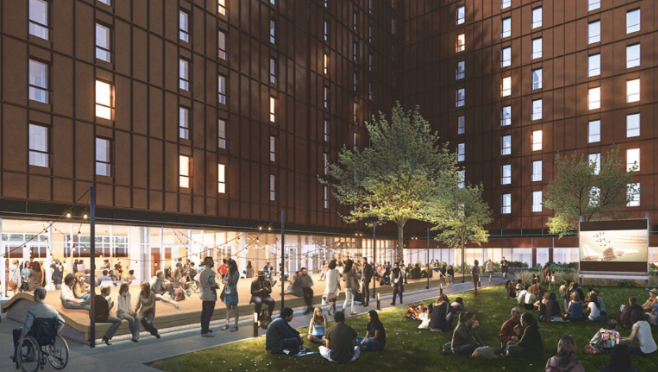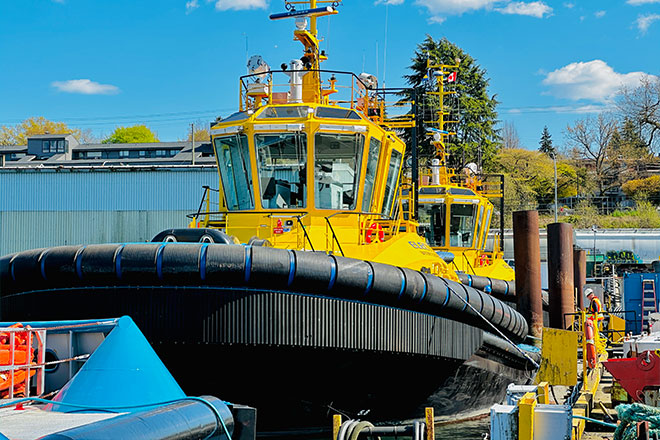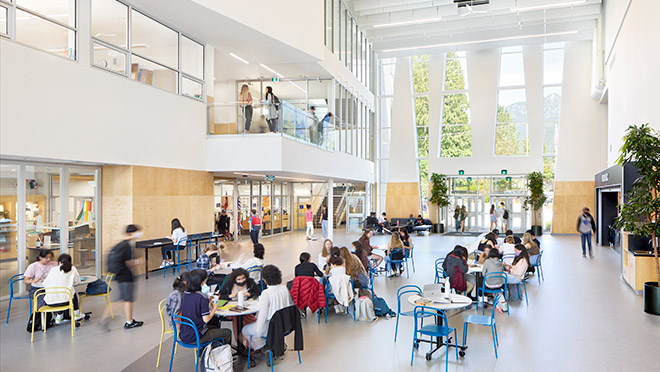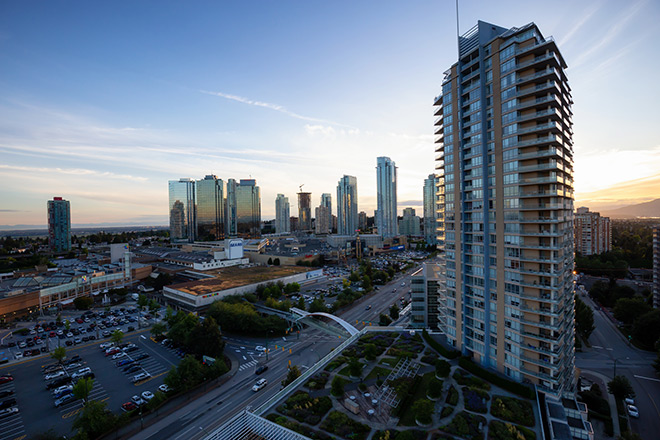New and retrofitted buildings at BCIT are all part of a 'living lab'

Energy efficiency and decarbonisation in the spotlight at Burnaby school
Part of a series on BC Hydro Clean Energy Champions: businesses, homes, and institutions – large and small – recognized for reducing their reliance on fossil fuels.
What do a 12-storey wooden building, a heat pump installation course, a display of various wall and roof assemblies, and retrofits to dozens of campus buildings have in common? They're all part of the B.C. Institute of Technology's (BCIT) Living Labs show-and-tell approach about energy use in buildings.
Through a "Living Labs" concept, builders experiment with new technologies, students and industry learn in-step with those explorations, and the bar is raised on building efficient, low-carbon buildings.
"What sets B.C. apart from most provinces is our renewable BC Hydro electricity," says Danica Djurkovic, BCIT's associate VP of campus planning and facilities. "It allows us to approach building design with a focus on renewable energy, and it's amazingly easier here than in other places. I have peers in other provinces who don't have renewable electricity and they really struggle."
The most visible sign of BCIT's ambitions is the work-in-progress 12-storey Tall Timber student residence, which is due to be completed and ready to house 470 students in the fall of 2025. It features innovative construction including mass timber technology – five-ply hemlock cross-laminated timber panels and supporting steel columns – along with passive house concepts that will decrease cooling needs in the summer and heating needs in the winter.
Innovative CO2 heat pumps will deliver hot water in the residence, where a 33% window-to-wall ratio (through the use of a triple-glazed window in each residential unit) will dramatically reduce the building's overall energy use.
Rather than using old-growth woods, which are heavy and expensive, mass timber buildings rely on glue-laminated beams and cross-laminated timber that are lighter and more sustainable than traditional construction using concrete, and meet fire suppression regulations.
"These new wood products can perform as well as solid wood, but carry much less of a footprint," says Djurkovic. "This is a renewable material, and with good management of our forests, it's very sustainable and makes sense, particularly here in B.C."

BCIT chases bold targets for CO2 emission reductions
The Government of B.C.'s CO2 emission targets for the province are 40% below 2007 levels by 2030, 60% by 2040 and 80% by 2050. BCIT's targets are even bolder – 50%, 80% and 100% – and every building and system on its campuses is a potential source of those savings.
Our incentives and support have helped implement the ongoing re-commissioning of buildings and the optimization of systems. BCIT's new Health Sciences Centre is an all-electric building with an enhanced building envelope ; and at BCIT's downtown campus, the installation of a heat recovery system in the IT data centre has reduced campus GHG emissions by about 30%.
"All the new buildings we've been developing in recent years have involved a deep focus on renewable energy and energy efficiency, including strategies for reducing peak demand," says Nikhil Agrawal, BCIT's energy manager for campus planning and facilities.
Agrawal points to the new Health Sciences Centre as a prime example. BCIT was able to harness energy for the centre from an existing geo-exchange field and share it with a neighbouring building. The geo-exchange field transfers heat to and from the buildings so that in summer, heat is removed from buildings and stored underground in 72 wells, each 75 metres deep. During the winter, it's extracted to heat the building.
"While top-down support is crucial for these projects, it's also essential that operations and maintenance stakeholders are aligned with any new technology or system introduced" says Agrawal. "After construction and turnover, these stakeholders will be responsible for maintaining the equipment. It's crucial that they are actively involved during the commissioning phase and have the opportunity to ask questions, as they will be managing the equipment for the next 20 to 30 years."
Sustainability in action boosts students across study areas
Students from a variety of BCIT programs benefit from on-campus projects that demonstrate emerging best practices.
Coming soon is a new state-of-the-art Trades and Technology Complex, designed to help B.C. meet the demands of an estimated 85,000 new trades jobs in the next decade. The $220 million complex at the Burnaby campus will be a living lab with a focus on education around energy-efficient, sustainable design, with the capacity for 700 new full-time students.
The complex will actually be a collection of new and renovated buildings. Anchored by the Concert Properties Centre for Trades and Technology, the complex also features the Robert Bosa Carpentry Pavilion, a marine and mass timber workshop, and a campus services building.
The project will also tackle the continued ecological restoration of Guichon Creek, a tributary of Burnaby's Still Creek that runs through the campus. A popular fishing spot in the early 1900s, the creek was dammed and urbanized and for decades had no fish, but restoration work – by BCIT, students, the BCIT Rivers Institute and the City of Burnaby – has largely restored the creek on the south side of the campus to its natural state. The crucial last step is to restore trout and salmon navigation upstream by 'daylighting' the underground portion of the creek on the north side of the campus .
Meanwhile back at the Zero Energy and Emissions Buildings Learning Centre…
It all started with a five-day passive house trades person course back in 2017. Today, the BCIT Zero Energy and Emissions Buildings Centre (ZEBLC) acts as a go-to educational hub for a construction industry transitioning to the BC Zero Carbon Step Code and the City of Vancouver Zero Emissions Buildings bylaws.
Trades people, builders, and architects take courses at the centre to earn a mix of micro-credentials and certificates ranging from building controls and energy management to an intro to solar photovoltaic and electrical systems for zero energy and passive homes. They also learn to build better walls.
"Our library now has more than 40 real life-size wall assemblies and roof assemblies for students to play with," says Alexandre Hebert, ZEBLC manager and the driving force behind the centre's creation.
A mechanical engineer by training, Hebert took a while to get to BCIT. He spent some time in manufacturing and explored China before getting his MBA at UBC, where he eventually worked with BC Hydro's Jim Nelson on a concept paper for the creation of what would become UBC's masters in clean energy. Smitten with our Power Smart programs and all things energy efficiency, Hebert became BCIT's first energy manager in 2009.
Today, Hebert says he's proud to oversee the wide variety of training, in large part, because the likes of BC Hydro have pushed for better building standards, policies and codes.
"We definitely have a portion of our audience doing these courses because they have to, which speaks to the importance of codes and policies," he says. "But we also have many who are trailblazers keen on learning how to build better buildings."



